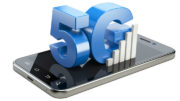AT&T takes the lead again. According to their press release, the company has started to roll out what they call “call validation” technology. If they can tell that the number on the screen actually comes from a real caller and isn’t a robocall, you’ll see a green checkmark next to the number. It should look like this:

This is the first step in curbing the tide of robocalls that’s made many people give up answering the phone at all.
How does it all work?
Earlier this year I told you that AT&T and T-Mobile are cooperating to put new standards into use. “SHAKEN/STIR” is most certainly a dumb name but it doesn’t matter what they call it if it works. It’s a series of certificates and tests that show that a call actually comes from the person it should.
Why is that so hard?
You know, I’m not sure. It seems like this sort of tracking should have been part of cell phone technology from day one. But like many things in our modern world, the people who created cell phone systems just didn’t see the nefarious ways in which they could be used. But whatever, it’s happening now.
With call validation, you’ll know if that phone call that says it’s from the local area really is. Robocallers won’t be able to pick a number at random from your city and use it to call ten thousand people.
It’s rolling out slowly
According to engadget the only phones that will work with this technology today are the Galaxy S10, Galaxy S10+ or LG V40 ThinQ. But I’m sure that’s temporary. My guess is it will roll out to most Androids in the next few months. iPhones, predictably, will come later but then they’ll call it something catch like “CallTrust” and everyone will fawn over it like it wasn’t already out in the market.
There’s no timetable yet but I would be very surprised if this tech took longer than six months to roll out to all modern phones. People want it. I’m hopeful that combined with apps like AT&T’s free Call Protect, it will either cut down on robocalls or at least identify them enough that you can know when to answer.
But is the damage done?
There’s some concern that years of robocalling may have changed the habits of a generation. Remember that in the 1990s people were positively addicted to email. As a free alternative to letter-writing, it couldn’t have been better. Then spam came along. For most of the 2000s, people suffered with hundreds of spam emails per day. Providers like Google and Microsoft rolled out strong anti-spam tools and they worked. Your GMail account probably hides most spam from you and it does so very successfully. But, chances are you don’t use email to communicate anymore. It’s where companies communicate with you. Your email is where Amazon sends receipts, where UPS sends shipping notifications, where Netflix tells you what’s new. It’s not where you talk to your friends.
I think voice calls are probably a thing of our past. For a century, we marveled at hearing the voice of someone distant. Today we’d rather text someone. It’s easier and takes less commitment. I think a whole generation has learned that texting is better than voice calling and they’re not likely to change back even if the robocall problem is solved.
But that doesn’t mean we shouldn’t try.
I think it’s great that AT&T is moving in this direction and for those of us who still do enjoy voice calling, we look forward to it. Think of how great it will be to see a new call on your screen and know for sure it’s someone you actually want to talk to. That’s a great use of new technology.





